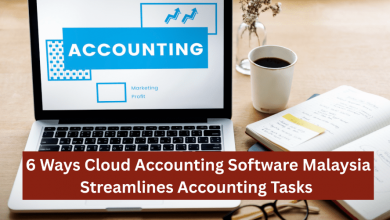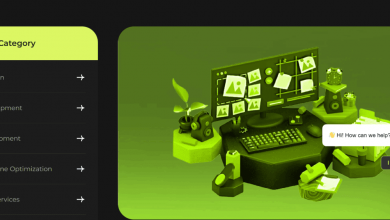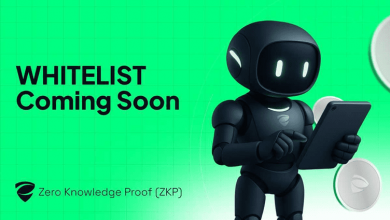Beyond the Game: Digital Marketing Strategies Powering Free Fire, PUBG Mobile, and Online Gaming Platforms
The digital realm has fundamentally reshaped industries across the globe, but few sectors have experienced a more explosive transformation than gaming. From the high-stakes battlegrounds of Free Fire and PUBG Mobile to the engaging social interactions of a tin patti gem, digital marketing is the invisible engine propelling these platforms to unprecedented levels of engagement and profitability. It’s no longer just about developing a compelling game; it’s about crafting an immersive digital ecosystem that attracts, retains, and monetizes a global audience, often leveraging sophisticated strategies that extend far beyond traditional advertising. The journey of a game from concept to global phenomenon, or an online platform like 11winner.com or Jeetwin login from a niche offering to a bustling community, is a testament to the power and precision of modern digital marketing.
At the heart of the mobile gaming revolution are titans like Free Fire and PUBG Mobile. Their ascent wasn’t accidental but rather the result of meticulously planned and executed digital marketing campaigns. One of the foundational strategies for any mobile game is App Store Optimization (ASO). Much like SEO for websites, ASO ensures that when a potential player searches for “battle royale” or “shooter game” on the App Store or Google Play, Free Fire or PUBG Mobile Game appears prominently. This involves strategic keyword placement in titles and descriptions, compelling screenshots and video previews, and consistently high ratings and reviews, which are often encouraged through in-game incentives. Beyond organic discovery, performance marketing plays a crucial role. This encompasses targeted paid advertising campaigns across social media platforms, ad networks, and search engines. These campaigns are meticulously optimized for user acquisition, often employing A/B testing on ad creatives and targeting specific demographics based on interests, device types, and even past gaming behavior. The sheer scale of user acquisition for these games necessitates a robust and constantly evolving performance marketing engine, converting clicks into active players.
However, attracting initial downloads is only half the battle; retaining players and fostering a loyal community is where sophisticated content marketing and community management come into play. Free Fire, for instance, doesn’t just release game updates; it crafts narratives, introduces new characters with backstories, and creates cinematic trailers that build anticipation and emotional investment. The official free fire com website serves as a central hub for news, updates, lore, and community events, providing a constant stream of fresh content that keeps players engaged even when they’re not in-game. Similarly, PUBG Mobile leverages its rich lore and competitive updates to maintain interest. Social media platforms become vital extensions of the game world. On platforms like YouTube, Instagram, TikTok, and Facebook, these games actively share gameplay highlights, character reveals, developer diaries, fan art showcases, and run interactive contests. This constant stream of engaging content, often encouraging user-generated content, transforms players from passive consumers into active participants and advocates, sharing their experiences and inviting others into the fold. Discord servers, official forums, and in-game chat functionalities further solidify these communities, allowing players to connect, strategize, and share their passion for the game, building a sense of belonging that transcends the digital battlefield.
The symbiotic relationship with the creator economy is arguably one of the most impactful digital marketing strategies for gaming. Influencer marketing, in particular, has been a game-changer for titles like Free Fire and PUBG Mobile. Top streamers and YouTubers, with their massive followings, become de facto brand ambassadors. When a popular content creator broadcasts their live gameplay, showcases new features, or participates in a challenge, it generates immense organic reach and authenticity that traditional advertising often struggles to achieve. Players look up to these creators, trust their opinions, and are inspired to emulate their gameplay, driving both new downloads and sustained engagement. These partnerships are not merely transactional; they often involve exclusive content, early access to updates, and collaborative events that benefit both the game and the creator, fostering a vibrant ecosystem where content generation becomes a continuous marketing loop. The sheer volume of user-generated content, from highlight reels to strategy guides, further amplifies the game’s presence across the digital landscape.
Beyond individual creators, esports stands as the pinnacle of marketing and engagement for competitive mobile games. The Free Fire World Championship and the PUBG Mobile Global Championship are not just tournaments; they are global spectacles meticulously marketed to draw massive viewership and consolidate the game’s status as a legitimate sport. The marketing around these events begins months in advance, building hype through qualification rounds, player profiles, and promotional videos. Digital channels are inundated with teasers, countdowns, and behind-the-scenes glimpses. Live streams of the “World Championship” events draw millions of concurrent viewers on platforms like YouTube and Twitch, often accompanied by in-game rewards for viewership milestones, further incentivizing engagement. These events transcend typical gaming, attracting sponsorships from major brands and elevating professional players to celebrity status. The narrative of competition, triumph, and skill becomes a powerful marketing tool, inspiring amateur players to hone their skills and dream of one day competing on the global stage, thereby extending the game’s lifecycle and cultural relevance far beyond simple entertainment.
While the competitive mobile gaming sphere leverages spectacle and skill, the broader online gaming landscape, encompassing everything from casual card games to real-money gaming platforms, employs distinct yet equally sophisticated digital marketing strategies. Consider the enduring popularity of “teen patti” or a “Tash Patti Game.” These traditional card games, when brought online, require marketing that emphasizes accessibility, social interaction, and often, the thrill of potential rewards. Their marketing often focuses on ease of play, the ability to connect with friends, and the nostalgic appeal of a classic game. Unlike high-octane battle royales, the marketing for these games might lean more towards community building, daily bonuses, and seamless user experience, often through intuitive mobile apps. The digital marketing playbook for these casual games often involves targeted advertising on social media, emphasizing their social and entertainment value, and leveraging app store visibility with clear, enticing descriptions.
Moving into the realm of online gaming platforms and casinos, such as 11winner.com or Jeetwin login, the marketing strategy shifts to incorporate elements of trust, security, and enticing promotional offers. For these platforms, building consumer confidence is paramount. Digital marketing efforts heavily emphasize licensing, regulatory compliance, and secure payment gateways. Welcome bonuses, free spins, and loyalty programs are aggressively marketed through performance marketing channels, email campaigns, and affiliate networks. SEO plays a critical role, ensuring that when users search for “online casino India” or “best betting sites,” these platforms rank highly. Content marketing might include blogs on responsible gaming, guides to different games like “Teen Patti” variations, or tips for new players. Affiliate marketing is a cornerstone, with partners promoting the platform to their audiences in exchange for a share of revenue or player sign-ups. The “Jeetwin login” process itself needs to be seamless and user-friendly, as any friction can lead to player abandonment. These platforms also invest heavily in customer support, recognizing that excellent service is a key retention tool and a powerful form of word-of-mouth marketing in the digital age. Responsible gaming messaging is increasingly integrated into their marketing, not just as a regulatory requirement but as a demonstration of ethical operation, building long-term trust with their player base. The focus here is on a sustainable relationship, where players feel secure and valued, much like how a game like Free Fire strives to build a loyal community, albeit with different motivations.
The future of gaming marketing promises even greater sophistication and personalization. Artificial intelligence and machine learning are increasingly used to analyze player data, predict behavior, and deliver hyper-personalized marketing messages and in-game offers. The metaverse and Web3 technologies are on the horizon, offering new frontiers for immersive advertising, virtual events, and NFT-based incentives. However, amidst these technological advancements, certain core principles will remain immutable. Authenticity, community building, and a deep understanding of player psychology will continue to be the cornerstones of successful digital marketing in the gaming industry. Whether it’s fostering global esports rivalries for PUBG Mobile, creating engaging narratives for Free Fire, or building trust and excitement for a “Tash Patti Game” on a platform like 11winner.com, the goal remains the same: to connect with players on a deeper level, transforming fleeting interest into enduring passion.
In conclusion, the success of gaming giants and burgeoning online platforms alike is undeniably “Beyond the Game” itself. It is the intricate web of digital marketing strategies – from precise app store optimization and performance marketing to the cultivation of vibrant online communities and the spectacle of esports world championships – that truly defines their reach and longevity. Free Fire, PUBG Mobile Game, and platforms enabling games like Teen Patti are not merely software; they are living, breathing digital ecosystems powered by continuous innovation in how they attract, engage, and retain their global audience. As the digital landscape continues to evolve, so too will the marketing strategies, constantly adapting to new technologies and player behaviors, ensuring that the gaming industry remains at the forefront of digital innovation and global engagement.





